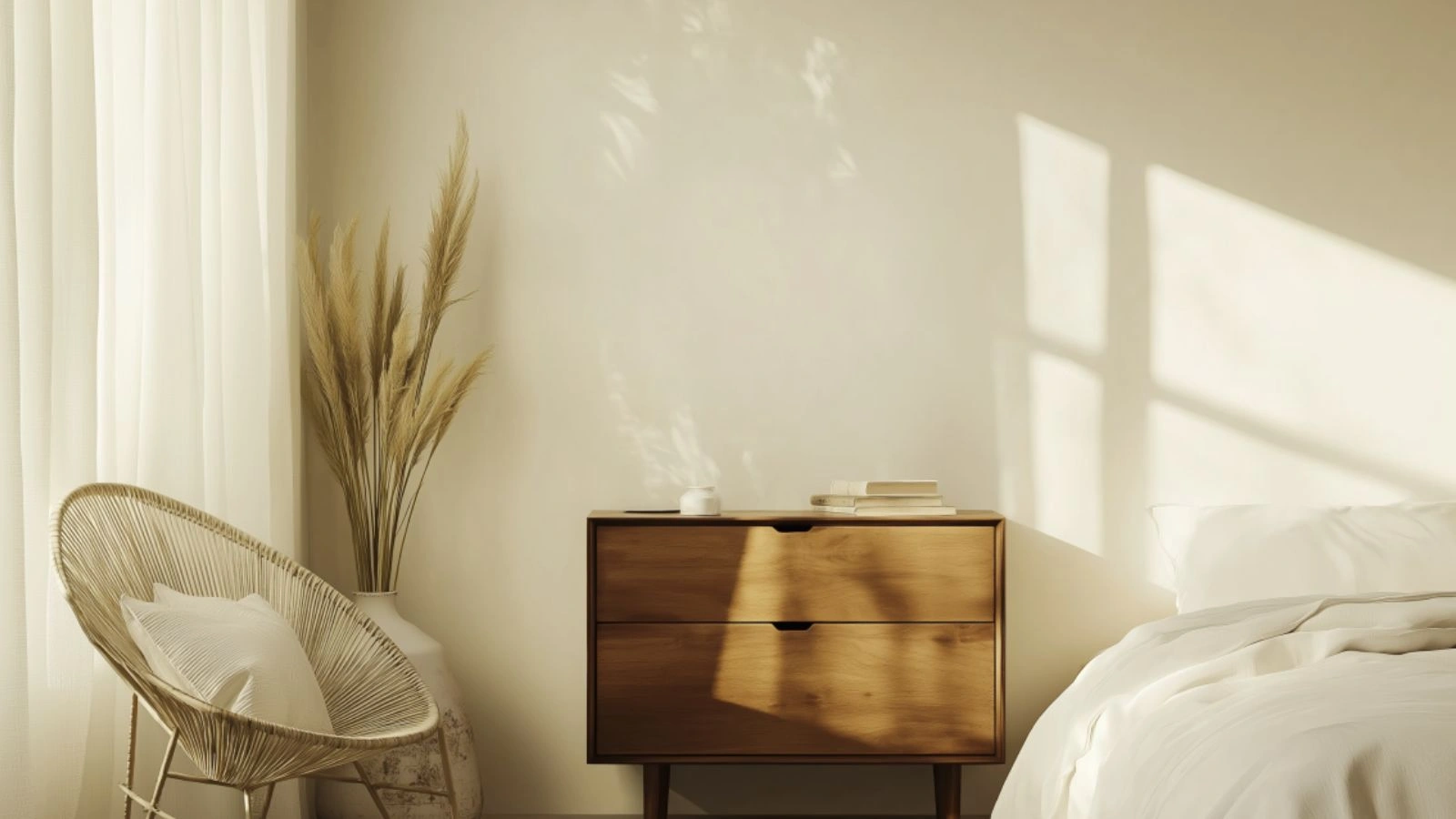Vintage Dresser Minimalist Design Ideas: Elevate Your Space with Timeless Charm
Table of Contents
Minimalism celebrates simplicity—but that doesn’t mean it has to feel sterile or bland. In fact, one standout piece can bring soul and character to a space otherwise defined by clean lines and restrained palettes. A vintage dresser is the perfect candidate for this kind of transformative effect.
Did you know that over 60% of homeowners now say they prefer mixing old and new in their home décor? This blend creates a sense of history while maintaining a modern edge. A vintage dresser, with its time-worn finish, ornate hardware, or Mid-Century silhouette, can instantly anchor a minimalist room, acting as both a statement piece and a functional storage solution.
This blog explores the art of integrating a vintage dresser into minimalist interiors. We’ll cover how to find the right piece, style it with intention, create balance in the room, and ensure it supports your minimalist lifestyle. Whether your style leans toward Scandinavian calm or Japandi warmth, you’ll discover ways to use vintage furniture as a subtle, yet powerful, design accent. Let’s dive into the harmonious world where heritage meets simplicity.
Choosing the Right Vintage Dresser for a Minimalist Space
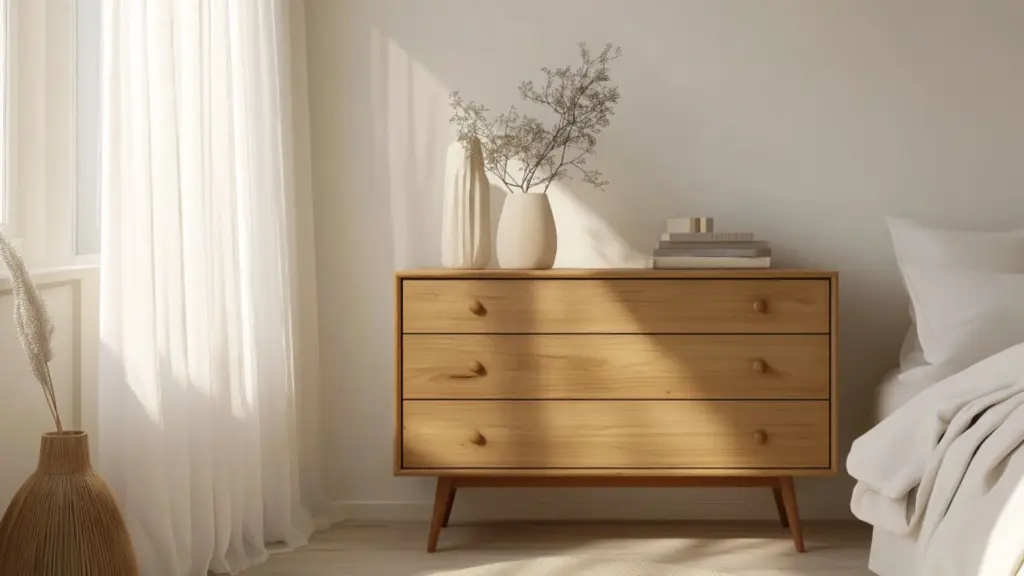
The first step in successfully incorporating a vintage dresser into your minimalist home design is finding the right piece. Not all vintage dressers are created equal—some lean heavy and ornate, while others offer sleek silhouettes that easily align with minimalist sensibilities.
Look for clean lines, simple drawer pulls, and solid wood construction. Mid-Century Modern or Art Deco pieces often blend seamlessly into minimalist interiors due to their geometric form and timeless appeal. Opt for wood tones that match or complement your existing palette—think oak, walnut, or painted whites and charcoals for a softer integration.
Checklist: What to Look for in a Vintage Dresser for Minimalist Homes
| Feature | Recommendation |
|---|---|
| Design | Clean lines, low profile, geometric shape |
| Material | Solid wood, natural finish, muted tones |
| Hardware | Minimal or vintage-modern pulls |
| Functionality | Smooth drawers, sturdy legs, storage space |
| Color Compatibility | Neutral or soft contrast to room palette |
Choosing the right dresser is about restraint. The goal is to bring in a piece that adds charm without overwhelming the space. Look for signs of craftsmanship rather than embellishment.
Balancing Vintage Charm with Minimalist Principles
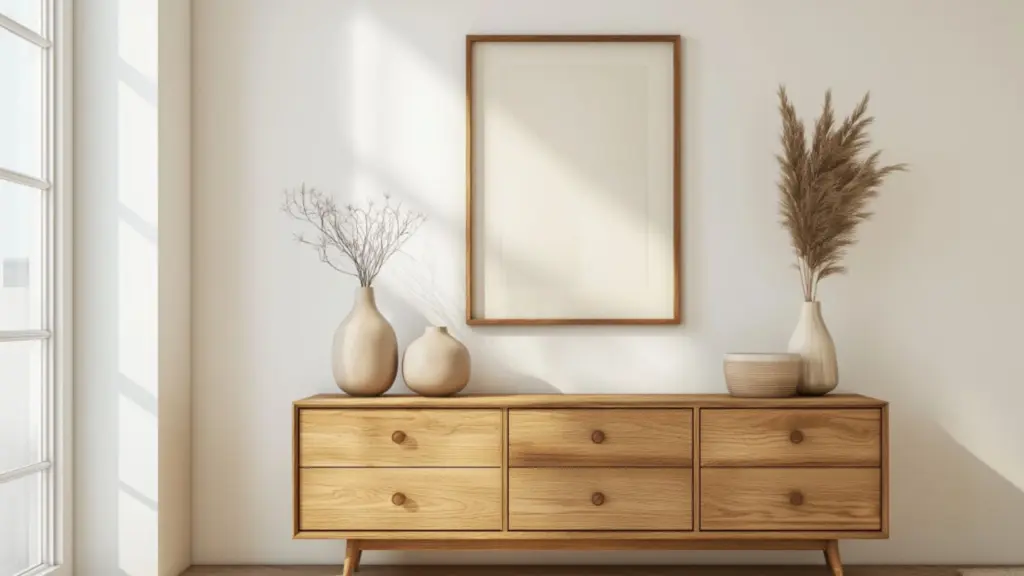
Once you’ve chosen your dresser, the next step is creating visual balance. Minimalist spaces prioritize openness, negative space, and intentional styling. A vintage dresser, especially if it has ornate features or a bold patina, must be integrated with care.
Position the dresser where it can shine without dominating. Keep surrounding décor minimal—perhaps a single vase with greenery, a modern mirror, or a stack of neutral-toned books. Avoid crowding the space with too many accessories or furniture pieces.
Visual Balance Tips for Vintage Meets Minimalist
| Element | How to Balance |
|---|---|
| Texture | Pair aged wood with soft textiles |
| Scale | Keep proportions consistent across room |
| Color | Stick to a simple palette with 1–2 accents |
| Accessories | Use no more than 2–3 per surface |
| Placement | Allow for breathing space on all sides |
Remember, minimalism isn’t about lack—it’s about focus. Let the vintage dresser become a focal point by giving it room to be noticed without noise.
Styling the Top of Your Vintage Dresser
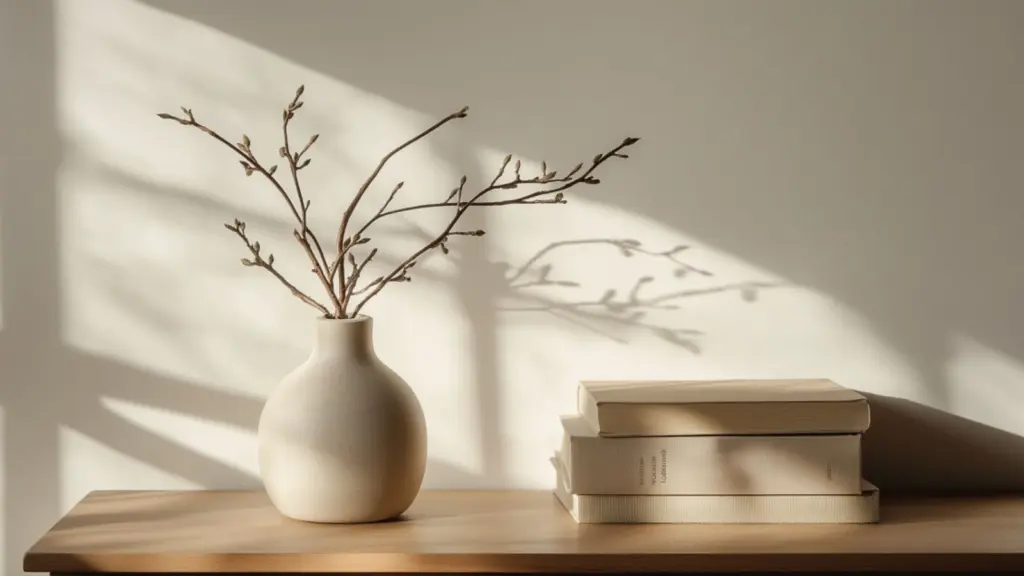
The top of your dresser presents a great opportunity to express minimalist style while honoring the vintage aesthetic. Think of it as a curated vignette rather than a display surface.
Select a few meaningful objects. A single sculptural lamp, a small ceramic bowl for jewelry, or a stack of design books with neutral covers can work beautifully. Introduce one natural element, like a dried flower arrangement or a piece of driftwood, to add organic warmth.
Minimalist Styling Ideas for Dresser Tops
| Object Type | Examples |
|---|---|
| Lighting | Modern dome lamp, minimalist table lamp |
| Natural Element | Dried eucalyptus, single branch in vase |
| Decor Accents | Unglazed ceramics, matte black trays |
| Artwork | One leaning frame or mirror |
| Books | Small, neutral stack (2–3 max) |
Keep things asymmetrical for visual interest but avoid clutter. Less is more—and what remains should feel intentional and peaceful.
Using a Vintage Dresser as a Functional Focal Point
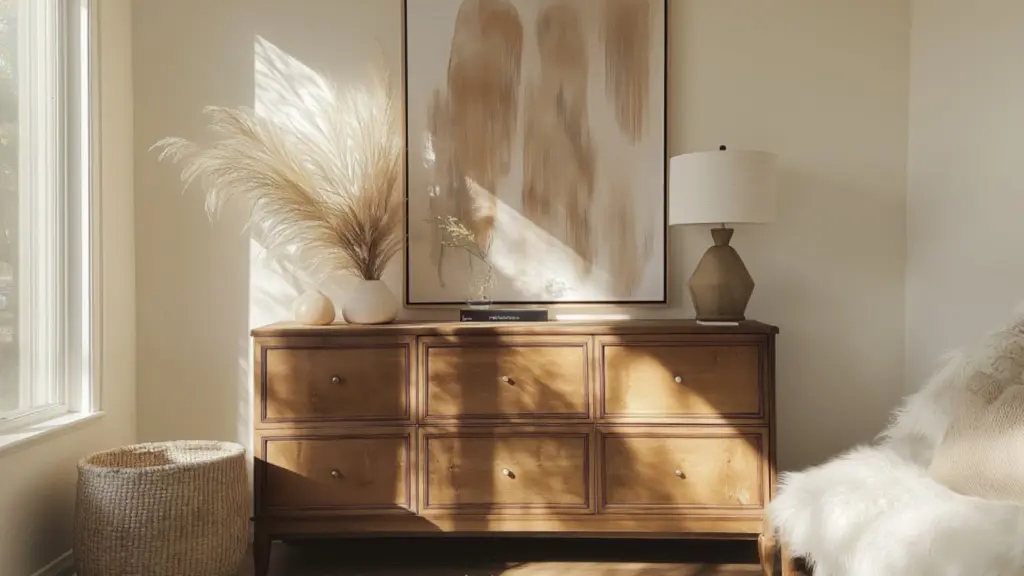
In a minimalist home, every piece must earn its place. A vintage dresser not only adds charm but also offers practical storage—making it a smart choice for multifunctional spaces.
Use your dresser in unexpected ways: in the entryway to store keys and gloves, in a dining area to hold linens, or in the living room as a media console. Its nostalgic presence brings warmth, while its drawers provide hidden organization—key in minimalist living.
How to Repurpose a Vintage Dresser in Minimalist Spaces
| Room | Functionality Ideas |
|---|---|
| Bedroom | Clothing storage, vanity base |
| Living Room | Media console, bookshelf alternative |
| Dining Room | Sideboard for serveware or napkins |
| Entryway | Catch-all for keys, mail, seasonal items |
| Home Office | Printer stand, document storage |
Choose placement based on traffic flow and daily needs. The more useful your vintage dresser is, the more seamlessly it becomes part of your minimalist routine.
Creating a Cohesive Color Palette with Vintage Furniture
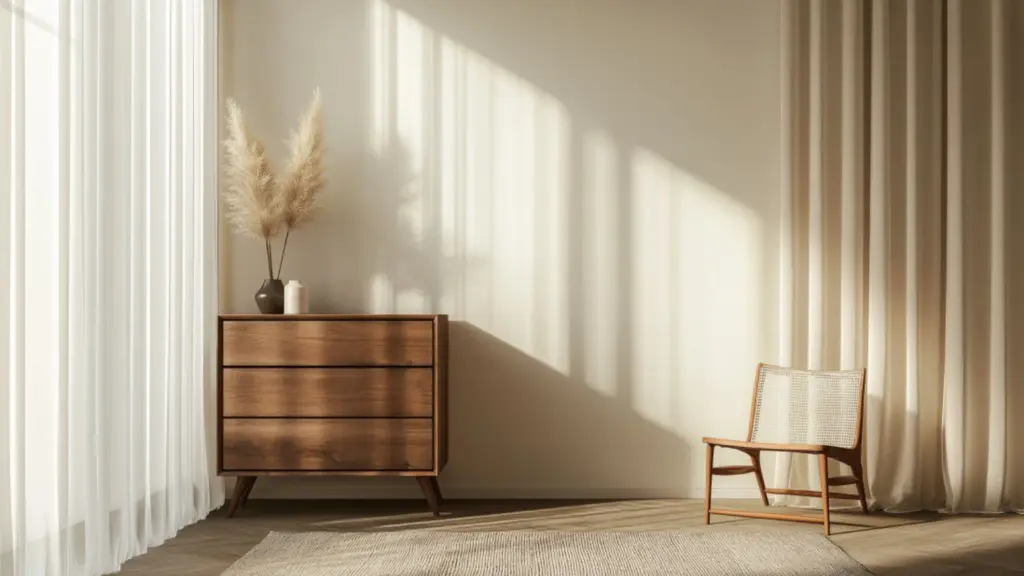
One of the biggest challenges when introducing vintage pieces into a minimalist room is maintaining a cohesive color palette. Vintage items often have distinct tones—warm wood, chippy paint, or deep hues—that can clash with the calm, neutral themes of minimalist décor.
To bridge the gap, use color as a unifier. If your vintage dresser has warm wood tones, balance them with warm whites, creams, or soft greys in the room. Cool-toned woods pair better with cooler neutrals like charcoal, slate, or pale blues.
Introduce echo tones subtly: in a rug, pillow, or small decorative item elsewhere in the room. Keep your primary palette under three core colors to retain minimalism.
Color Palette Harmony with Vintage Dressers
| Dresser Tone | Matching Neutrals | Accent Ideas |
|---|---|---|
| Warm Oak/Walnut | Cream, beige, tan | Brass, terracotta, ochre |
| Dark Mahogany | Soft white, greige, navy | Antique gold, burgundy |
| Painted White | Light grey, dove, blush | Linen textures, matte black |
| Cool Teak/Maple | Slate, pale blue, ash grey | Chrome, icy pastels |
This approach helps your vintage piece feel integrated, not isolated. It’s a quiet design strategy that lets the old and new harmonize naturally.
Blending Vintage and Modern Textures for Depth
Texture is essential to making minimalism feel cozy instead of cold. A vintage dresser naturally brings depth through its wood grain, patina, or hand-crafted joints. Pair this with other textures to create a layered, lived-in look that still feels clean.
Surround your dresser with complementary textures—linen curtains, jute rugs, wool throws, or ceramic décor. The tactile contrast brings visual softness and sensory appeal to the room.
Texture Pairing Guide for Vintage Dressers
| Vintage Texture | Modern Companion Textures |
|---|---|
| Aged Wood | Soft linen, smooth matte ceramic |
| Chippy Paint | Polished stone, woven natural fibers |
| Metal Pulls | Textured upholstery, suede, boucle |
| Distressed Surface | Clean glass, minimal artwork |
Vary your textures across horizontal and vertical planes. For instance, pair a vintage dresser with a soft area rug underneath and a smooth, modern sconce above. This vertical layering keeps the eye moving and the space feeling complete.
Maintaining the Minimalist Look Over Time
Vintage pieces can tempt us to collect more, but maintaining a minimalist aesthetic means resisting clutter. Make a habit of re-evaluating your dresser top and drawers regularly. Edit down what’s displayed to preserve intentionality.
When adding new items, use a “one-in, one-out” approach. Ensure everything stored inside the dresser still serves your lifestyle. Minimalism is not a one-time project—it’s a practice of mindful living.
Maintenance Tips for a Minimalist Home with Vintage Touches
| Habit | Why It Matters |
|---|---|
| Weekly Editing | Keeps surfaces clean and purposeful |
| Seasonal Swapping | Refreshes décor without adding clutter |
| Drawer Audits | Ensures storage supports current needs |
| Style Restraint | Preserves open space and visual calm |
Your vintage dresser can age beautifully in a minimalist home—as long as your habits support simplicity and purpose.
Conclusion
Bringing a vintage dresser into a minimalist home might seem counterintuitive at first—but it’s actually a beautiful way to fuse charm with simplicity. When chosen with care, styled with restraint, and maintained with intention, a vintage piece adds both function and soul to your space.
From choosing the right silhouette to harmonizing color palettes and layering textures, you’ve seen how a single furniture piece can elevate your minimalist design. It’s not about having less for the sake of it—it’s about choosing better, living deeper, and letting the past complement the present with quiet elegance.
Let your home tell a story—one of timeless design, purposeful living, and thoughtful beauty.

